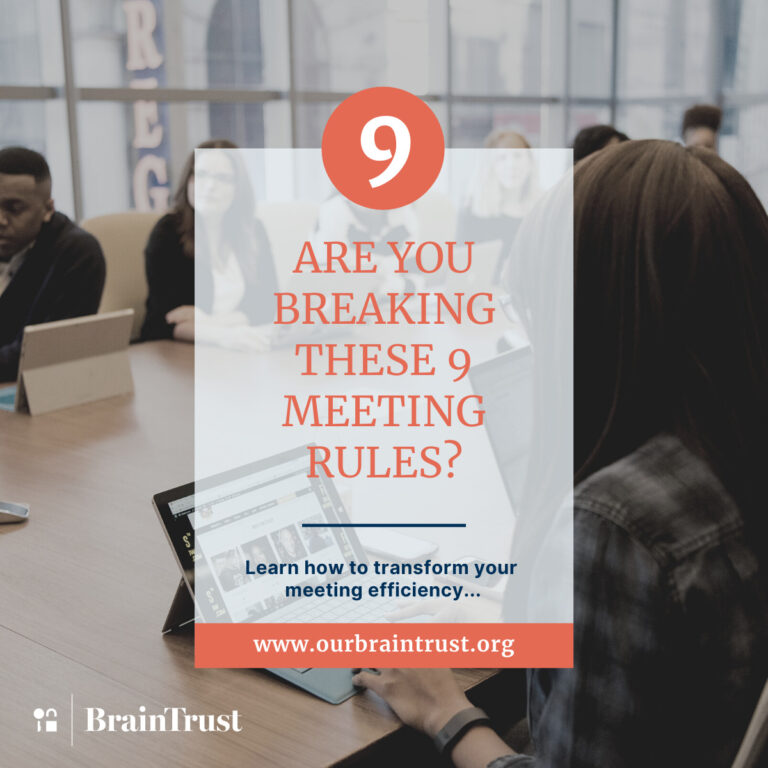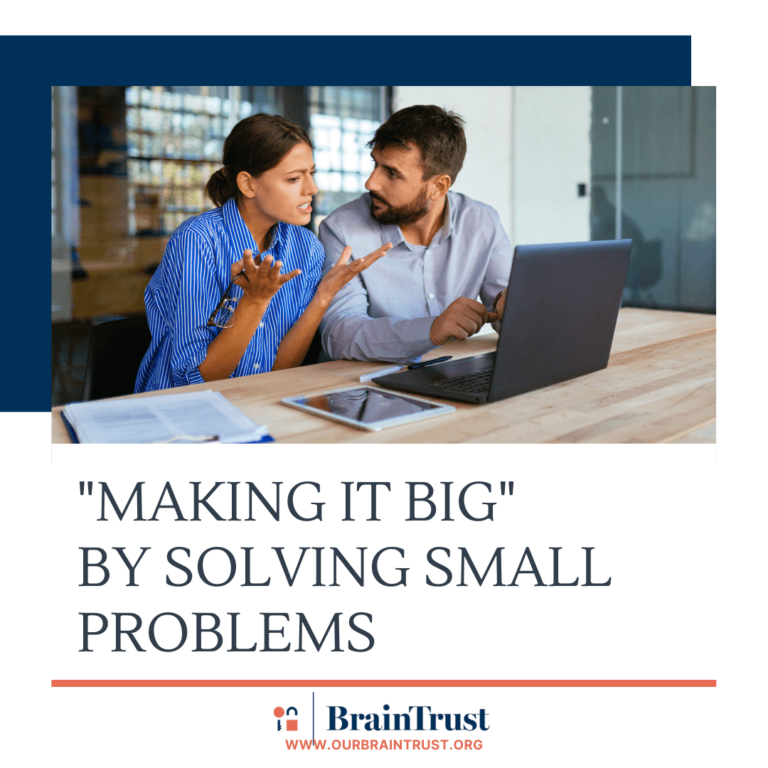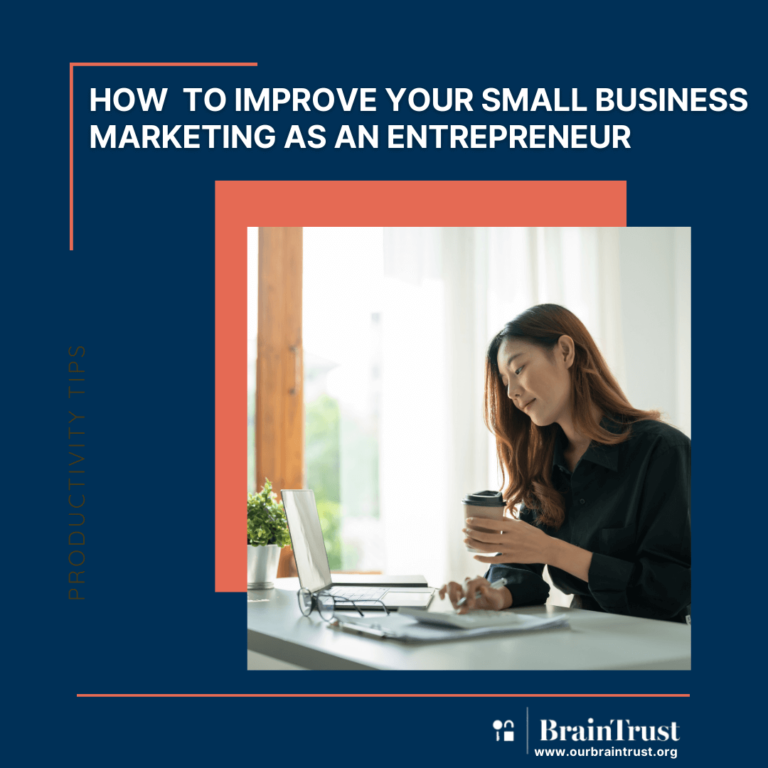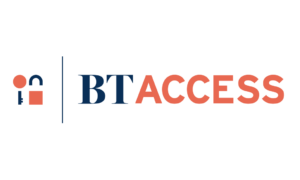Why Advice Sucks…and How to Stop Giving It
In the business world, advice is as common as coffee meetings, but is it beneficial? Let’s explore why advice might be doing more harm than good and how we can shift our approach for better outcomes.
The Pitfalls of Advice
At BrainTrust, advice-giving is a HUGE no-no. Think about it this way, when you give advice you’re implying that YOUR way is better, suggesting that others should be more like you. However, your advice is often colored by personal biases and may not align with the recipient’s values or business goals.
What happens when you give advice and they don’t follow it? When their strategy fails, you’re likely thinking, “If you’d listened to ME, you wouldn’t be in this predicament.” feeling resentful that they didn’t listen to you. But what happens when they DO follow your advice… and it doesn’t work out for them? You may then be plagued with guilt while they brew with resentment and even anger toward you. Either way, negative emotions will start dividing the relationship.
The Value of Active Listening
Instead of jumping in with advice, listening can be more powerful. But not all listening is created equal and hearing is not the same thing as listening. The proper way to listen – yes, there is a proper way – is to listen for understanding.
Instead of listening with the intention of jumping in to tell your story or defend your point, consider focusing fully on understanding the speaker’s message, including what they are not saying. Before interjecting, comprehend the full message without judgment. This requires your full attention – so put down your phone and focus!
Now, you’re probably thinking, “This is silly, I don’t need anyone to tell me how to listen, I’m already doing that just fine!” This could be completely correct, but think about what you just did… you judged before fully comprehending the message of this blog. Not as easy as you thought, right?
Just because you don’t listen for understanding automatically doesn’t mean you’re listening wrong, it’s natural for people to use mental shortcuts to jump to conclusions, our brains are wired to do that! Listening for understanding takes practice and requires a lot of focus at first. To make this transition a little easier here are some proven behaviors that make us listen better:
- Clear distractions when listening to someone
- Maintain good posture
- Lean in
- Take Notes
Asking the Right Questions
Once you have fully comprehended the speaker’s message, now is the time to ask questions. Asking questions helps clarify any questions and facilitates self-reflection that may help them arrive at their own solutions.
Remember: if the speaker doesn’t tell you something about the situation, don’t draw any conclusions; ask the necessary questions to ensure you understand the whole picture.
Tip: Make sure your questions are not advice in disguise! Avoid questions that begin with “Have you considered…” or “Could you have…” or “What would happen if…” Questions like these typically follow with an idea or solution YOU have come up with, not the speaker. The entire point of this method is for the speaker to develop their own solution, not you.
Sharing Experiences, Not Prescriptions
Now that the entire situation is understood it is time for you to offer your experience to the speaker. This way, you’re providing perspective and potential lessons they won’t have to learn themselves without dictating a specific course of action, leaving room for the speaker to draw their own relevant insights.
Tip: if you don’t have a relevant experience to share, that’s okay! You won’t have experience in every situation, so consider thinking about someone who does and asking them for their experience share to provide insights on the situation.
BrainTrust Vaults have seven women in them for a reason… not everyone will have experience in all the topics brought to the table, but by working together and sharing their experiences, BrainTrust members provide each other with information and insights to drastically shorten the learning curve to scale.
This no-advice approach can extend beyond BrainTrust, enhancing personal and professional relationships by empowering others to think critically and make their own decisions.








